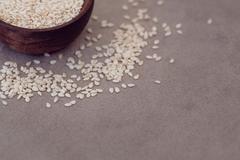Breastfeeding is a wonderful way for a mother to bond with her newborn and provides nutrients that are crucial for his/her growth. A mum must ideally breastfeed her baby soon after delivery, but some women wonder if they can successfully nurse after a C-section.
In some cases, the effects of medication and intravenous fluids make breastfeeding a bit difficult after a Caesarean. However, with the right care, nursing your baby after a C-section delivery is manageable. Here are a few tips that could help you:
1. Start early and participate actively
Starting the feeding process soon after delivery is key to achieving a good latch. Many hospitals encourage the mother to breastfeed or have skin-to-skin contact with the baby in the operating room itself. You might be exhausted and in pain, but it’s important to allow your baby to suckle often so that your body’s breastfeeding hormones swing into action. Your baby might need a feed every 2-3 hours, and the more s/he suckles, the better the production of breastmilk.
2. Master the correct hold
How you hold your baby while nursing also sets you for breastfeeding success. Positions that do not irritate the incision site will help you recover faster postpartum. Few feeding positions you could try are:
- Lying on the side: This position helps you rest while the baby feeds. You can prop yourself up on a pillow or your arm so that your baby can breathe easily.
- Clutch hold: Also known as the football hold, this position involves the mother sitting on a chair or bed with her legs folded. The baby is held sideways, with the head towards the mother and feet pointing backward. This position is useful for feeding twins.
- Reclined feeding: You could lie on a reclining chair and hold your baby across your body while breastfeeding so that s/he is away from your scars. Speak to a lactation consultant to help clear any doubts that you might have.
Investing in a feeding pillow is a good idea as it takes off the baby’s load off your arms and provides rest to your aching back.
3. Eat right
To heal better, a new mum needs to eat healthy, as producing breastmilk is hard work. A breastfeeding mum’s diet must typically include fruits, vegetables, nuts, seeds, pulses, and complex carbs. Consume a lot of fluids in the form of soups, milk, coconut water and water to maintain your hydration levels. Include foods like fenugreek, asparagus (Shatavari), dates, garlic, fennel, etc. in your diet. These foods are galactagogues (foods that stimulate breastmilk production) and are a must in a nursing mum’s diet.
 |
4. Care for the scar
The sooner you recover, the faster you and your baby can get into the rhythm of breastfeeding. Keep your incision area clean and dry. Do not hesitate to take any prescribed medication as it will help you deal with the pain and manage sleepless nights better. If you have any doubts regarding the effect of the medicines on breastmilk, speak to your doctor.
5. Don’t hesitate to accept help
It takes about 6 to 8 weeks to fully recover from a C-section. You might be yearning for normalcy, but take your time to get used to your baby and the changes in your body. Accept help whenever you can so that you can establish a successful breastfeeding relationship with your little one. You could try pumping milk using a breast pump to catch a few more hours of sleep at night.
Motherhood is the beginning of a wonderful journey and breastfeeding is a bond that adds more joy. Just a little bit of care and practice, and you will be comfortable breastfeeding your baby in no time.

|
Lentils are a source of complex carbohydrates that burn slowly yet provide the necessary amount of energy to the body.
